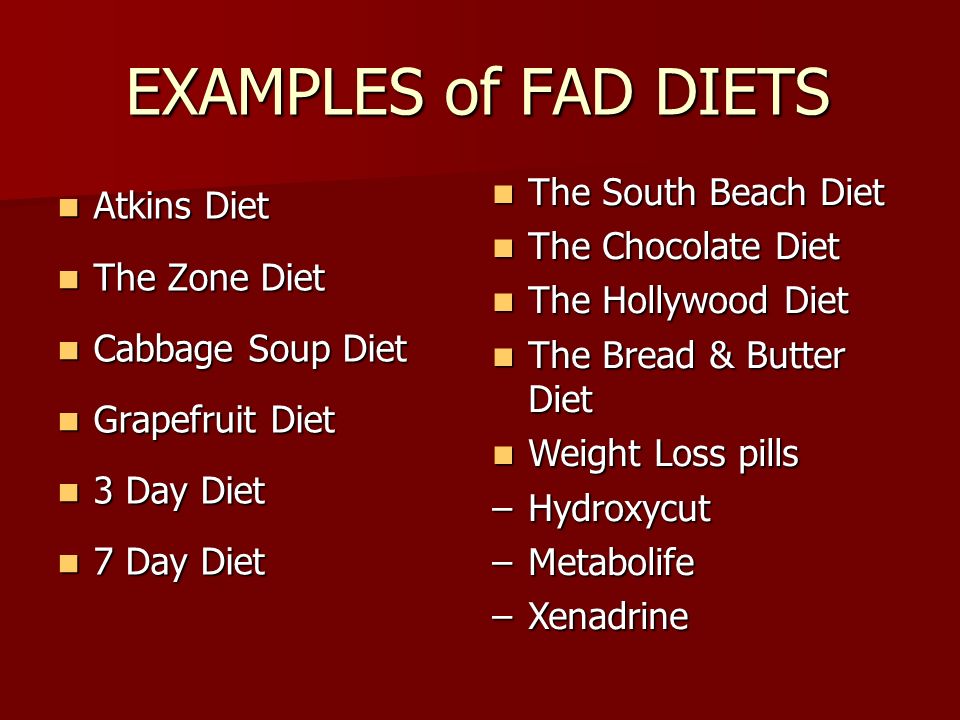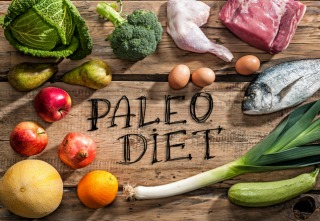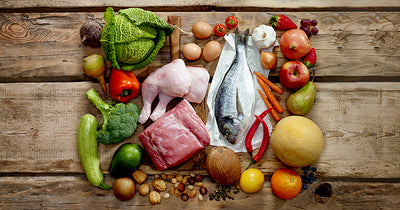
Dr. Loren C. Cordain, an expert in nutrition and exercise physiologicallogy, is a strong advocate of Paleolithic eating. There are many misconceptions about the Paleolithic lifestyle. Let's explore the myths around this diet to better understand why it is so important that you eat healthy food. These are some of the most popular myths surrounding this diet.
Dr. Loren Cordain
Dr. Loren cordain is an internationally recognized authority on human development. He's been featured on The New York Times, Wall Street Journal and Dateline NBC. He is also the foremost authority on natural human diets. He has published more that 100 peer-reviewed scientific papers in this area and has pioneered research on the health effects of eating foods from Stone Age ancestors.
Dr. Cordain is interested in the evolutionary and human factors that underlie our diets. His publications focus on the nutritional composition of wild animal and plant foods that early humans ate. He is the world's leading authority on Paleolithic foodways and has delivered numerous lectures worldwide. His books on the topic are widely read and popular. Learn more about Dr. Cordain in his biography.
His research

Loren Cordain has discovered a link between modern-day diseases and diets. Stone Age people consumed less sodium, potassium, and other modern diseases. In the same way, Middle East residents ate more fruits & vegetables. This could be why modern civilisation has some of the most common diseases. What if diet is only part of the problem? Why haven’t more people been eating fruits and vegetables instead?
Paleo is a popular health movement that discourages the consumption of whole grains, legumes as well as dairy and processed food. Researchers have repeated the same recommendation. The Paleo diet is more effective than other diets at improving your health and immune system. While Dr. Cordain's research doesn't prove that humans were able to survive without these foods, many of us can benefit from its benefits.
His book
This book is essential reading for anyone who wants to learn the science behind Paleolithic food. American scientist Loren Cordain specializes in exercise physiology and nutrition. His book Eat to Live, which he wrote, is the first to be published by a leading Paleolithic nutritionist. Cordain has many supporters, despite being skeptical about his methods.
Loren Cordain, who is a Colorado State University professor and one of the leading experts in exercise physiology as well as nutrition, is known worldwide. He has worked with world-renowned scientists to develop the Paleo Diet. This is the first book written by one of the founders of this fad diet. He explains in the book how the Paleo Diet has changed our lives. Read it now, and change your diet for good.
His views on nutrition

One of Dr. Cordain's biggest contributions to modern health is the science of diet. He is a Ph.D. in health from the University of Utah. Since 1982, he has been a Colorado State University professor. He is regarded as one the most respected authorities on natural human food and is featured in Dateline NBC.
Taking a look at paleolithic diet history, Cordain provides valuable insight into the benefits of this lifestyle. Paleo was introduced by Dr. Boyd Eaton and has since become one of most popular dietary trends. Dr. Cordain continues to research the diet's health benefits in all ages, including children. He also addresses the importance of legumes, dairy, as well as carbohydrates and reveals the truth about what our bodies were made to eat.
His critics
Criticians of Loren C. Cordain's Paleo Diet draw attention to numerous facts and examples in their critique. Although lean meat has a high protein content, it lacks essential nutrients like calcium, salt and folic acid. Additionally, the body does not receive protective nutrients like vitamin A or omega-3 fatty acid.
FAQ
How long does cooking take? What amount of time will it take to master the art?
It depends on your level of skill. Some people can learn basic cooking techniques in as little as a week. Some people take months to learn how to cook. Others may need to wait for years.
There are many factors that affect the time required to learn how cook. A person who has never cooked before will likely need more time to learn than someone who is a regular cook. You may also need more experience with certain types of cooking than others. Baking, for example, requires more experience than frying.
You should learn a particular technique to improve your cooking speed. After mastering one technique, you can move on to the next. You shouldn't stress about how long it takes to learn how cook. Keep practicing and enjoying the process.
What is the best career path for someone who wants to be a chef? What are the best ways to start your career as a chef.
As an apprentice, you can start your journey to becoming a chef. Apprenticeships allow you to work for several years without paying any tuition fees. After you complete your apprenticeship, it is possible to apply for a job as a sous-chef. Sous chefs are responsible for supervising cooks and helping them prepare salads or desserts. They also oversee the entire operation of the restaurant.
How much does culinary school cost?
The costs of culinary school can vary depending on where and how long it takes. The annual tuition average is between $10,000 and $30,000 The average student graduates with $20,000 in debt. Some programs offer scholarships, grants, or work-study opportunities.
How Long Does It Take to Be a Chef? What's the average career path for a chef?
Becoming a chef takes approximately five years. You will be able to learn basic cooking techniques as well as gain practical experience working in a kitchen. After your training is complete, you will be eligible to apply for a job as a sous chef, executive chef, or line cook. The average salary for a chef ranges from $25,000 to $60,000 per year.
Can you be a self-taught cook?
Yes, you can self-teach cooking! Everyone loves cooking, regardless of whether they are skilled or not. If you're interested in learning how cook at home, then start cooking. Start small, such as making pancakes for breakfast and spaghetti sauce at dinner. Try new recipes and be open to experimentation when learning how to cook. It is possible to make mistakes.
Learning to cook takes anywhere from a couple of hours to several weeks, depending on what type of skill level you are looking for. It's important that you remember that cooking does not mean following a recipe. There are many ways to cook food. If you have an idea, follow it.
Statistics
- You'll be amazed that over 90% of CIA students receive scholarships and grants to finish their culinary studies. (ischoolconnect.com)
- On average, chefs earn $58,740 a year, according to the BLS. - learnhowtobecome.org
- The median pay for a chef or head cook is $53,380 per year or $25.66/hour, according to the U.S. Bureau of Labor Statistics (BLS). (learnhowtobecome.org)
External Links
How To
How to make the perfect omelet
Omelets is one of my favourite breakfast foods. But how do they turn out so perfectly? There are many recipes and methods I tried, but none worked. So I am sharing some tips and tricks today to help you make fluffy, delicious omelets every morning.
When making omelets, it is important to be aware that eggs can be temperamental. The eggs must be fresh from an organic source and kept at room temperature until they are ready to be cooked. They must be kept cool, otherwise the whites will not form properly and the yolks may become runny. This makes your omelets look weirdly colored. It is best to use room-temperature eggs if you are going to cook them right away.
You can also separate the egg before you add it to the pan. You don't want any white to get mixed up with the yolk because this could cause the omelet to curdle.
You might burn the bottom of the egg if you place the egg directly on the stovetop. This could ruin the texture of your omelet. Instead, heat the egg in a microwave for 10 seconds and then place it in a pan. The microwave heat cooks the eggs just right without overcooking them.
Next, let's discuss mixing the eggs. When mixing eggs, it is important to thoroughly beat them. Turn the bowl upside down and grab the whisk to do this. Then shake the bowl vigorously. This allows the air to be whipped and the egg to be mixed thoroughly.
Now it's time to have fun: pour the milk into the mixture. Pour half the milk into the beaten egg mixture and then fold in the eggs. Do not worry if you see streaks of egg; they will disappear when the omelet is flipped.
After folding the eggs, place the pan on medium heat and wait for the oil to start sizzling. Once the oil has gotten hot, add 1/4 cup of butter and swirl it around so that the entire pan is coated. Next, carefully open the lid and sprinkle salt into your pan. The salt will help to prevent the omelet's sticking to the pan.
Cover the pan once you have formed the omelet. Wait for the top to set. Flip the omelet upside down or with a spatula. Cook the other side for another minute or two. Remove the omelet from the pan and serve immediately.
This recipe works best using whole milk. Skimmed milk is also possible.